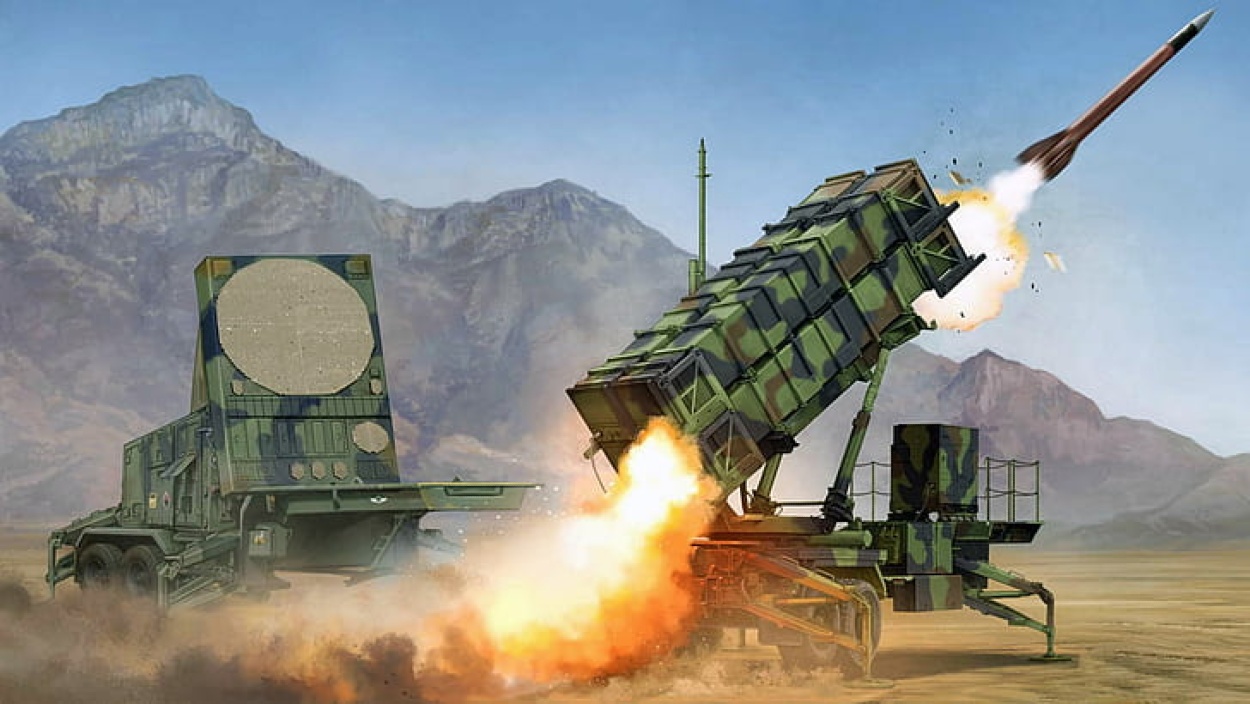In what could be a clear signal of coming closer to NATO, Japan has modified its arms-export rules. The rationale seems to be the fear of China in the Indo-Pacific.
If Japan can help the NATO countries during crisis situations such as the war in Ukraine, it can expect reciprocal support from NATO while responding to the Chinese aggressive designs, if any, in this part of the world, it is being argued.
Last weekend, Tokyo decided to update its export rules so that it could sell Patriot air defense missiles to the US, marking its first-ever foray into selling complete lethal weapons to allied nations since the post-World War II era.
Previously, only the transfer of components of those weapons was permitted.
Now, the modified rules say that Tokyo could sell complete weapons and other military equipment to all those countries that are the patent holders, with whom there are agreements to produce these weapons and equipment under license. Patriot missiles fall under this category.
So far, only components of Patriots could be sent to the US. Patriot, the air defense systems, are manufactured by Japan’s Mitsubishi Heavy Industries under a license from the American manufacturers Raytheon and Lockheed Martin.
There are now even enough indications that Japan is going to further tweak the rules that will also allow recipient countries to transfer equipment to a third country with prior approval, except to those actively involved in an armed conflict, such as Ukraine and Israel.
What that means is that until the rules are further modified, the US cannot send to either Israel or Ukraine Japanese-built Patriot missiles. But what it allows in reality is the indirect help to Ukraine. The US can now easily supply American-made Patriots to Ukraine from its own inventory, which, in turn, is to be replenished by Japan.
In other words, Washington’s inventories could be freed up to assist Ukraine but restocked with Japanese-made Patriot missiles for its own use. This is for now. If Japan does tweak the rules further, as indicated in response to NATO requests, then the transfer of Japanese-made Patriot missiles by the US to a third country will be possible under Tokyo’s approval.
Then, these missiles could be sent to countries like Poland and many other European countries that have shown interest in their use.
Reportedly, Japan will be selling each patriot at a price of around 500 million yen or $3.49 million. And it will be a major defense-export item after the nonlethal radar warning systems it exported to the Philippines in the past.
Incidentally, Japan manufactures F-15 fighter jets under license from the US. Japanese firms also make defense items such as artillery under license from seven other countries, including the UK, France, and Germany. Their components or parts, such as engines and wings of fighter jets, have been sold earlier to countries with which Japan cooperates in security matters.
However, the Patriot missiles would be the first export of finished “lethal equipment,” marking a turning point in defense export policy.
“This decision has a significant meaning to strengthen the Japan-U.S. alliance,” Yoshimasa Hayashi, the chief cabinet secretary, said after a meeting of Japan’s National Security Council on Friday (December 22). “And it will contribute to Japan and the Indo-Pacific region’s peace and stability.”
Japanese experts say that since the Indo-Pacific has no regional security alliance comparable to NATO, should a crisis break out in the Taiwan Strait or elsewhere in the region, Japan would need to secure cooperation individually from the US and other partners.
Japanese policymakers are worried that China has been rapidly expanding its military capabilities while North Korea advances its nuclear and missile technologies. China and Russia are conducting joint military activity in waters and skies near Japan.
Considering all this, a stronger partnership with NATO members will be the key to ensuring support during such a crisis, it is argued. Japanese help to Ukraine and other European countries, whether directly or through the United States, could help to strengthen deterrence in the region by conveying to North Korea and China that democratic allies across the Indo-Pacific are building a global arms supply chain.
“If we succeed in creating such a supply chain, then our potential adversaries would think, ‘Wow, the US, Japan, South Korea, and Taiwan would have plenty of weapons and munitions and missiles to fight against them,’” argues Narushige Michishita, a professor of international relations at the National Graduate Institute for Policy Studies in Tokyo. “And they would be discouraged from attacking us in the first place.”
Expectedly, the US is very happy with the Japanese decision. US National Security Advisor Jake Sullivan has said in a statement that the US welcomed the decision to sell the Patriots.
“This decision will contribute to the security of Japan and to peace and stability in the Indo-Pacific region by ensuring that US forces, in close cooperation with the Japan Self-Defense Forces, will continue to maintain a credible deterrence and response capability,” Sullivan said.
It is increasingly becoming apparent that Tokyo has now shifted away from its decades of pacifism that was in keeping with the country’s pacifist post-second world war constitution.
Under its new security strategy, Japan can now develop counter-strike capabilities, a major reversal from its previous policies of limited self-defense. Japanese Prime Minister Fumio Kishida has also expanded Japan’s military budget under a five-year plan. Emphasis is now on developing a very strong defense industry that would not only enhance national security but also promote defense exports.
It may be noted that the process of having a relook at Japan’s defense started under the leadership of late Prime Minister Shinzo Abe. In 2013, his government introduced the concept of “Proactive Contribution to Peace” as the guiding principle of Japan’s first National Security that changed Japan’s prior approach of possessing minimum necessary basic defense capability for self-defense.
The Abe regime replaced the then-existing ‘Three Principles on Arms Exports’ with the ‘Three Principles on Transfer of Defense Equipment and Technology’ in 2014. It opened the door to the export of nonlethal Japanese weapons slowly and slowly.

Way back in 1967, the Japanese Diet, during the regime of Prime Minister Eisaku Sato, had framed the so-called “three principles,” prohibiting arms exports to 1) the Communist bloc, 2) countries subject to arms embargoes imposed by United Nations Security Council resolutions, and 3) parties to an international conflict or countries that may become a party to an international conflict.
During the 1980s, some exceptions to these three principles were made for the United States, following arms technology licensing with Washington.
Abe’s “Three Principles on Transfer of Defense Equipment and Technology’ in 2014 further eased the import and export of arms. These principles were 1) clarification of cases in which transfer is prohibited, 2) limitations on cases in which transfer may be approved, as well as rigorous screening and information disclosure, and 3) ensuring appropriate management of use for other than the intended purpose and transfer to a third country.
Three reasons were cited for these changes: there were many complaints about burdensome case-by-case export licensing; there was a changing geopolitical environment after the end of the Cold War; and there was the realization of the need for flexible joint development with like-minded security partners.
However, further changes were suggested by the 2022 National Security Strategy (NSS), enunciated by present Prime Minister Kishida, for whom the promotion of defense equipment transfer is a policy of high priority.
According to the NSS, “The Three Principles on Transfer of Defense Equipment and Technology, its Implementation Guidelines, and other systems are to be considered for revisions to promote the smooth transfer of defense equipment and technology of high-security significance and international joint development in a broad array of fields.”
In addition, Japan’s latest National Defense Strategy (NDS), a subordinate document of the NSS, states that the government will transfer defense equipment and conduct capacity building in order to promote stability in the Indo-Pacific region and strengthen regional defense capabilities.
Viewed thus, the decision to sell Patriots to the US is a prelude to the emergence of Japan as a major defense production centre of the world. Japan’s years of pacifism are no longer a potent issue in the country’s politics to halt this development. Criticisms of the revision as a major policy shift are becoming weaker and weaker.
- Author and veteran journalist Prakash Nanda is Chairman of the Editorial Board – EurAsian Times and has commented on politics, foreign policy, and strategic affairs for nearly three decades. A former National Fellow of the Indian Council for Historical Research and recipient of the Seoul Peace Prize Scholarship, he is also a Distinguished Fellow at the Institute of Peace and Conflict Studies.
- CONTACT: prakash.nanda (at) hotmail.com
- Follow EurAsian Times on Google News




